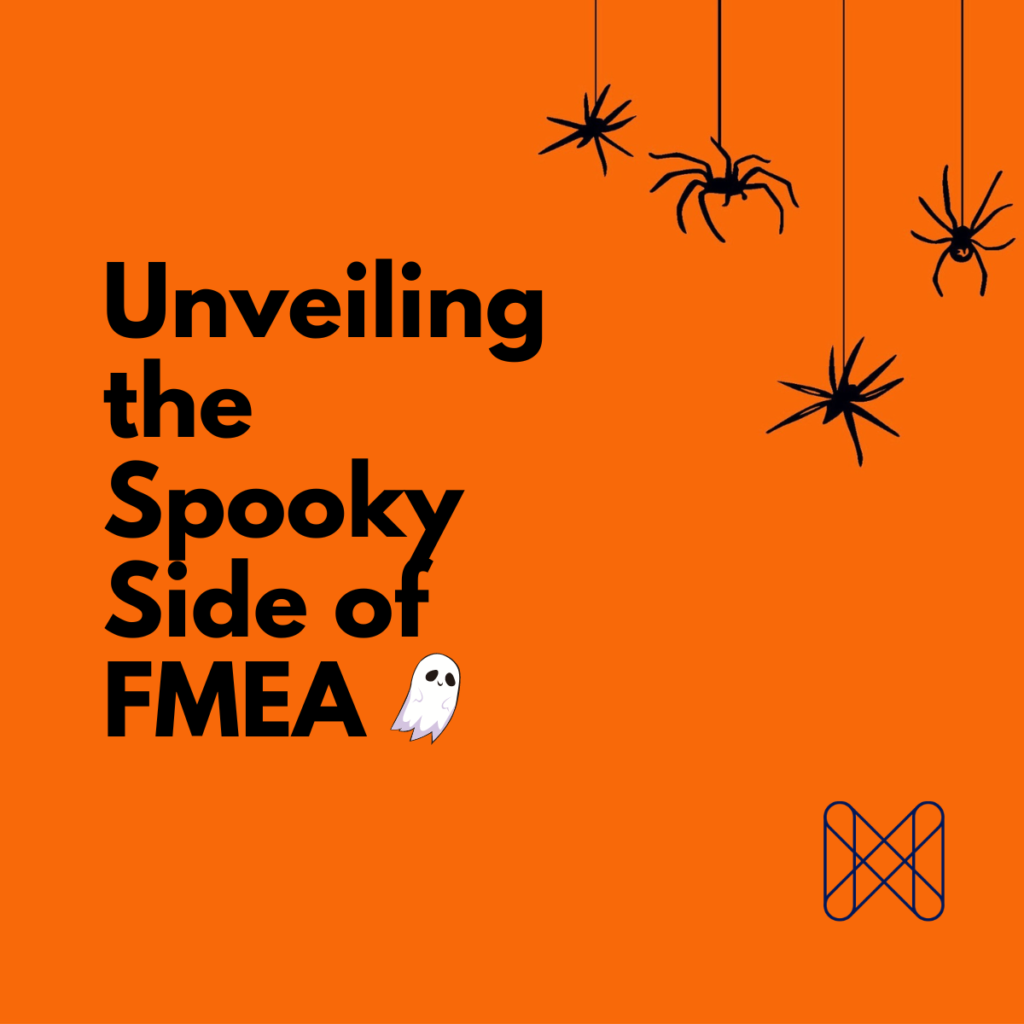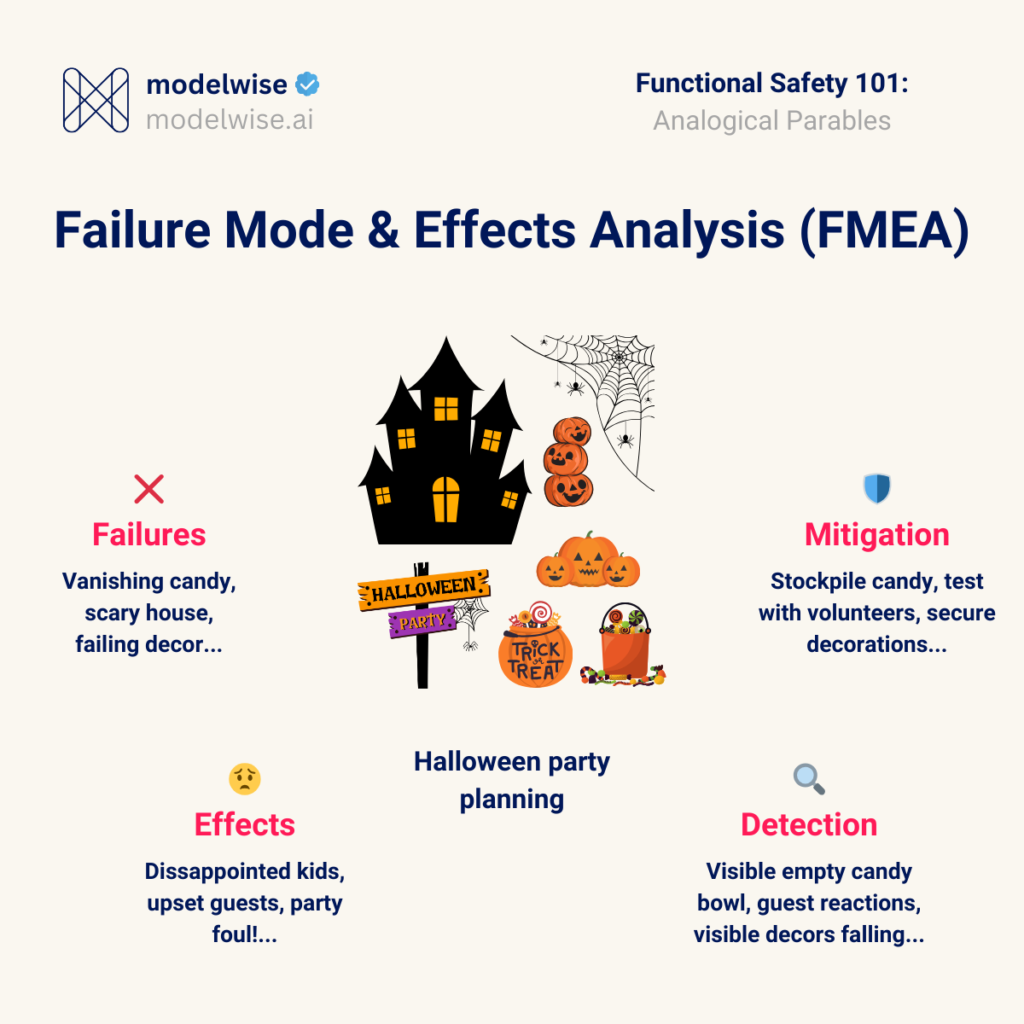FMEA: A Powerful Tool to Anticipate & Avoid Potential Failures

Halloween and FMEA in a single sentence? Now, that’s a truly unique pairing! Despite their initial mismatch, there is more to it than meets the eye. Through the analogy of planning a Halloween party, we will explore the essence of FMEA – a technique for anticipating, identifying, and preventing potential failures in complex systems.
But first, what is FMEA? FMEA stands for Failure Mode and Effects Analysis. It is a method that helps us anticipate and avoid potential failures in complex systems, such as products, processes, or projects. By using FMEA, we can:
- Identify the possible ways that a system can fail (failure modes)
- Assess the consequences of each failure (effects)
- Rate each failure on how bad it is, how likely it is, and how easy it is to detect (severity, occurrence, and detection)
- Come up with actions to reduce or eliminate the risk of each failure (mitigation)
Now that we know what FMEA is let’s see how we can apply it to plan our spooky and safe Halloween party. Picture this: your Halloween soirée in the making, complete with eerie decorations, a haunted house setting the scene, and a bowl brimming with candy delights. But what if we told you this party planning is more than just a spooky spectacle? It’s an FMEA in disguise!

To treat this party planning as if it were an FMEA, you would:
Step 1: Identify potential failures
First, you would brainstorm all the potential failures – the things that could go wrong. For example:
- The candy could vanish faster than a vampire at sunrise.
- The haunted house could be too scary (or not scary enough).
- And those decorations and cobwebs? They could come tumbling down at any moment.
Each of these represents a potential failure mode.
Step 2: Assess the effects of failures
Next, you would consider the effects of each failure. For example:
- If the candy runs out, you will have a horde of disappointed trick-or-treaters.
- If the haunted house is too scary, you might have some upset guests (and possibly encounter some liability issues!).
- Decorations on the floor? That is a party foul!
Step 3: Rate the failures
Then, you would rate each failure mode on how bad it is (severity), how likely it is to happen (occurrence), and how easy it is to spot (detection).
- Running out of candy? Code red, likely to happen, but easy to spot. In FMEA language – high severity, high occurrence, easy to detect.
- Is the haunted house causing nightmares because it is too scary? Medium risk, unlikely, but tricky to spot. Which translates to medium severity, low occurrence, and hard to detect.
- And now consider the decorations – prone to falling? A potential mishap, low occurrence, but challenging to detect. This translates to medium severity, low occurrence, and hard to detect.
A numerical scale is used in the industry to rate the failures.
Step 4: Mitigate the failures
Finally, you would come up with some backup plans to mitigate each of the failure modes. for example, you could:
- Stockpile candy like there is no tomorrow.
- Test the haunted house on a few brave volunteers.
- Secure those decorations with a lot more extra-strong tape.
And voilà! What emerges is a Halloween celebration meticulously planned with the precision and thoroughness of an FMEA process. A symphony of safety in the spookiest way possible.
While it looks relatively simpler and straightforward in our analogical parable, however, in practice, the FMEA technique is more complex and time consuming. But what if you want to automate this process? Then, you might want to check out Paitron, our functional safety suite that seamlessly automates the FMEA process.
Curious to see how it works? Sign up for a Testversion version or schedule a demo today!Wussten Sie schon?
- That FMEA was first used by the US Military in the late 1940s to reduce sources of variation and potential failures in the production of munitions? Or that FMEA was adopted by NASA as a crucial project planning technique for the Apollo missions?
- Halloween can be traced back to a Celtic holiday called Samhain, which marked the end of the harvest season and the beginning of the dark half of the year. Or that jack-o’-lanterns were originally carved from turnips, not pumpkins?
